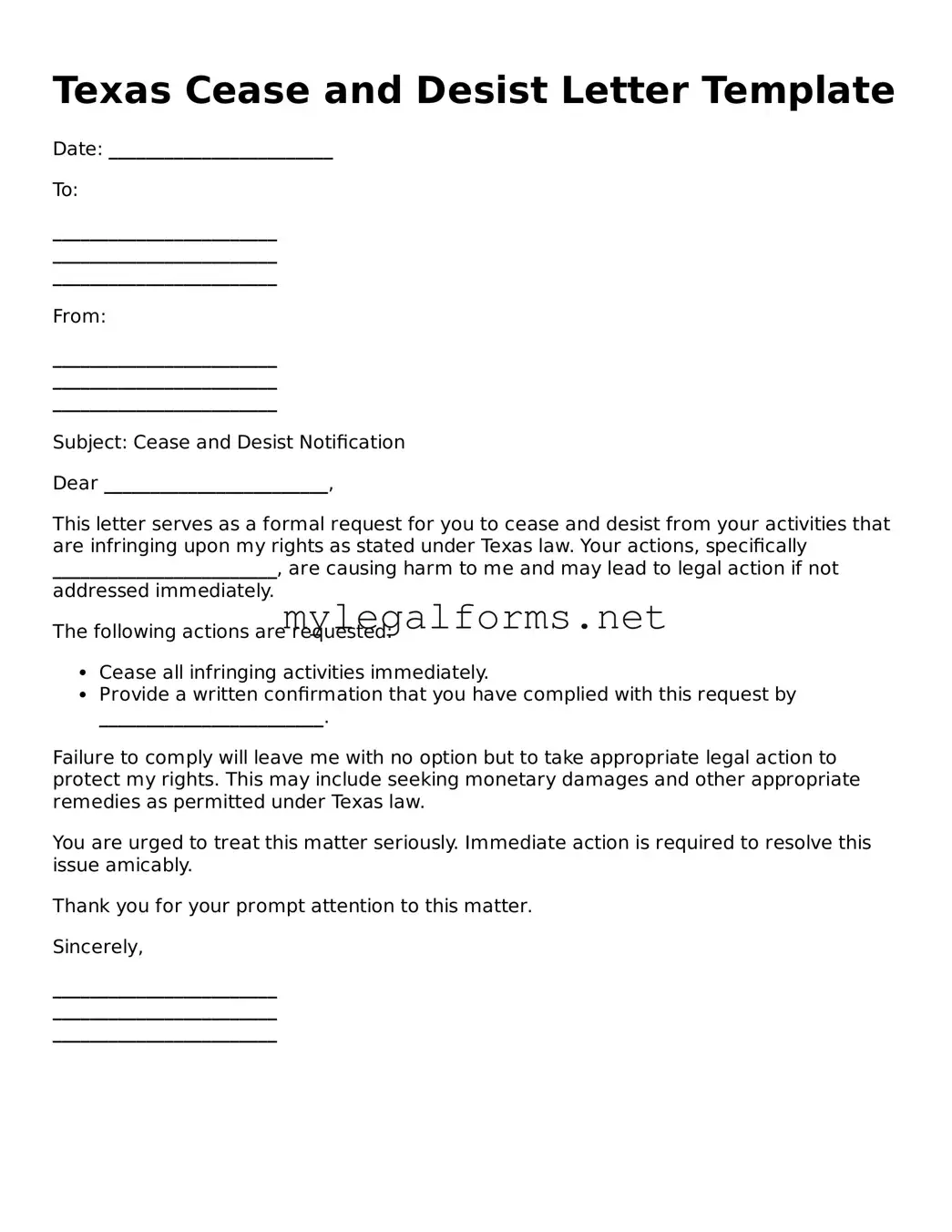Cease and Desist Letter Document for Texas State
A Texas Cease and Desist Letter is a formal document used to request that an individual or organization stop certain actions or behaviors that are perceived as harmful or unlawful. This letter serves as a warning, outlining the specific actions that need to cease and providing a clear indication of the potential consequences if compliance is not achieved. Understanding the proper use of this form can be crucial for individuals seeking to protect their rights and interests.
Launch Cease and Desist Letter Editor
